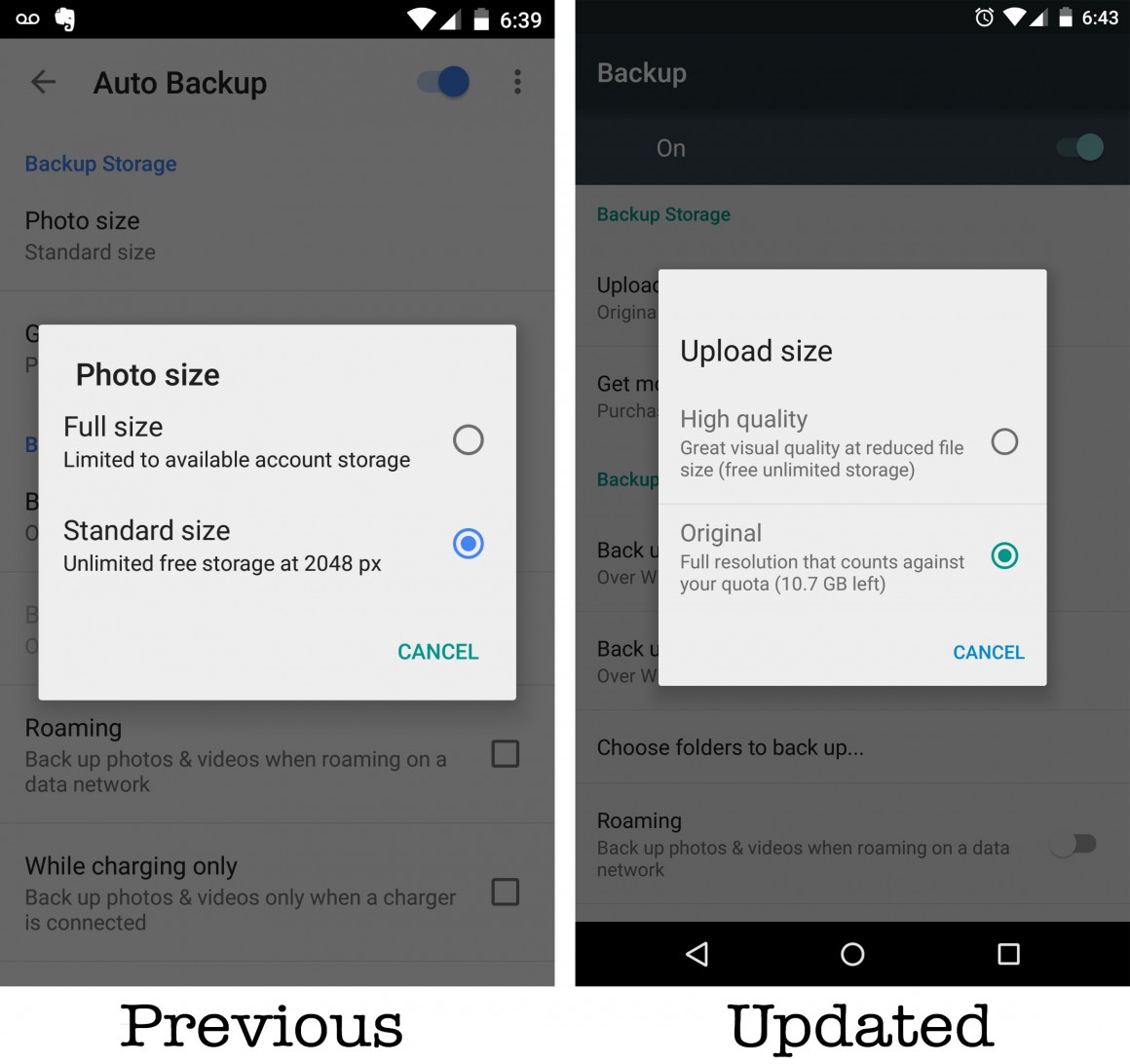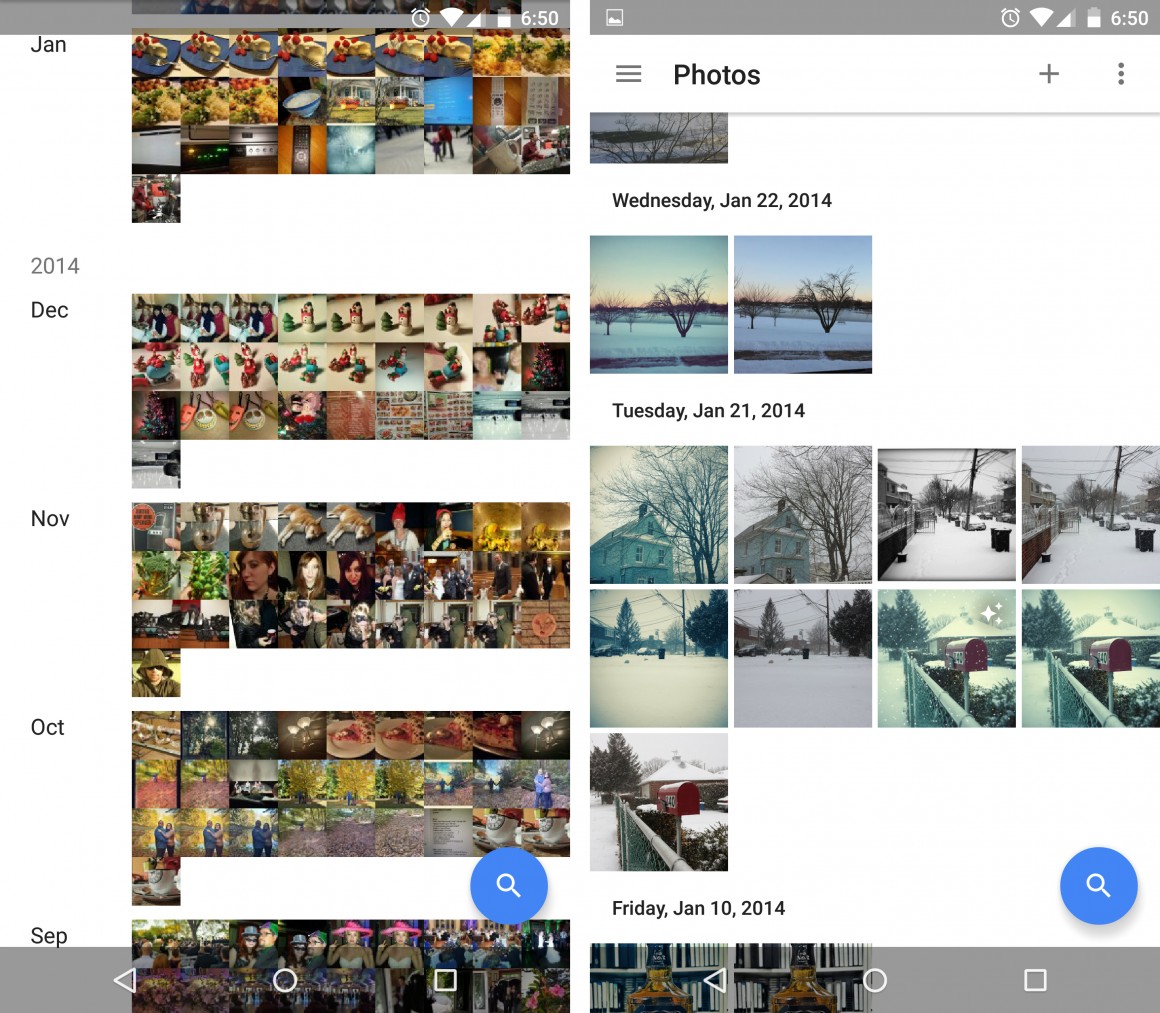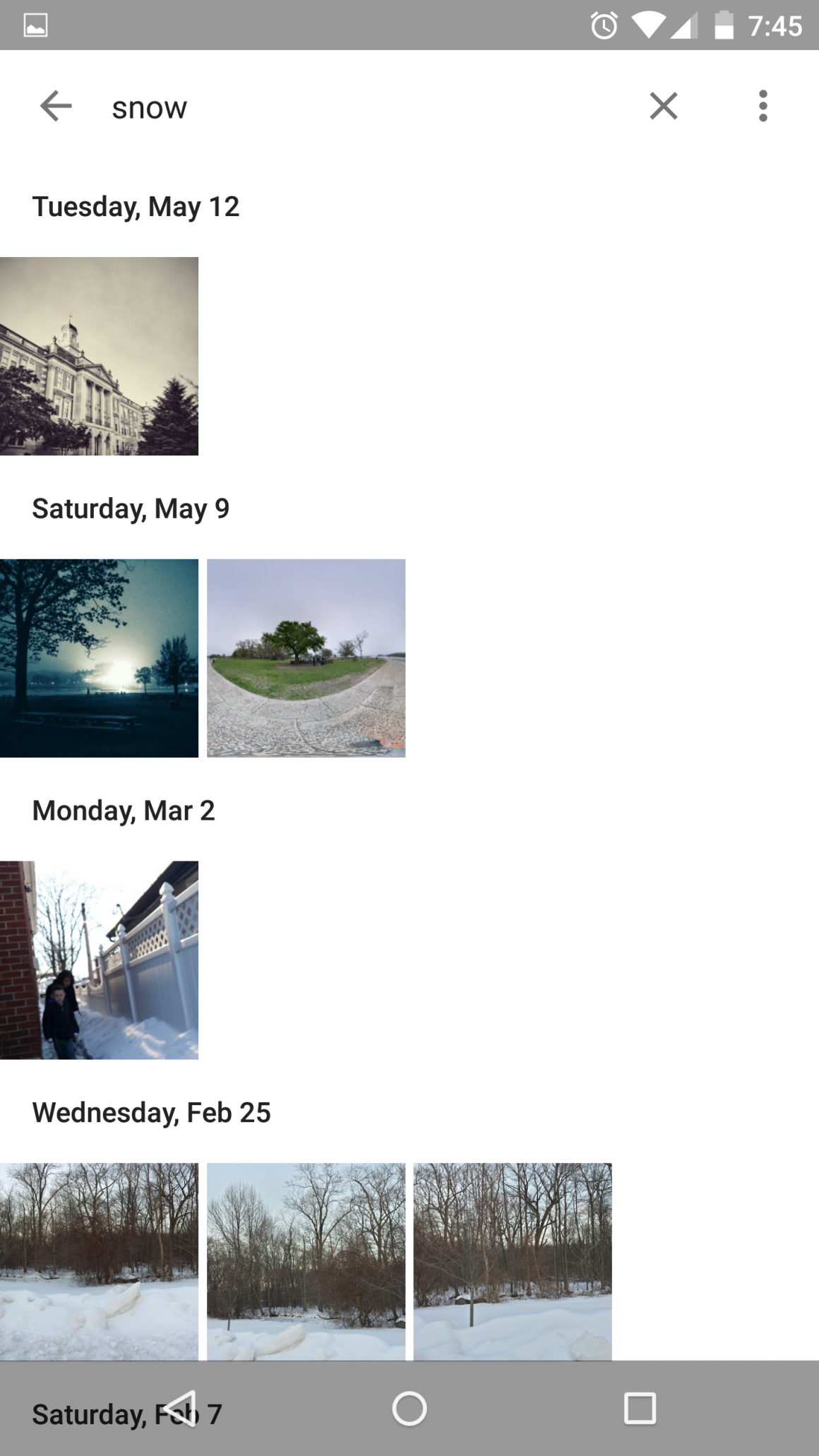Not Perfect But Still A Must Have!
This past May, Google held its yearly I/O conference and announced a number of new plans and ideas for their Android OS and other web products. One item announced was the new stand alone app for their Google+ Photos component; now the new Google Photos.
Low and behold, the app (which is preinstalled on every Android Phone since Kit Kat was released) had an update, which revamped the app and its features. It now gets its own web page, which houses the web based version of the app. The web page mirrors the app pretty closely but this post will focus on the app.
Auto Backup
Similar to the previous versions of Google Photos, you get an option to automatically backup your images to a Google account as well as the option to set an upload size. This is a great way to snap away on your phone and have the peace of mind that, should your phone be lost or broken, your images are safe and sound, easily accessible from anywhere you can access your Google account. Google even has a Device Manager on their site to remote lock/erase the contents of a lost/stolen device. But don’t worry, if you perform this remote data wipe, your pics will still be safely backed up on your account, ready to be ported to another phone or tablet.
Here’s where things start to look great for Google Photos. In earlier versions of the app, your choices were either to upload the full sized images, which taps into your Google Drive and Gmail storage space (a free 15GB) or the reduced “standard” size, which reduced the image size to 2048px on the longest side. Just for reference, a phone camera shooting at 13 megapixels will get you an image size of 4000+px on its longest side. Yea, that would be reducing your pics to half their resolution!
After this update, you still have the option to save full sized images, just like before, however, the “standard” size is now called “High Quality”. This grants you unlimited storage for all of your images that are under 16 megapixels. Not bad seeing that a majority of Android phones on the market today house cameras that range from 8-16 megapixels. With technology continuously improving megapixel quantity, we’ll have to see if Google increases this limit in the future.

Storage and Organization
The layout has been given a nice little makeover as well. As images are taken, they are grouped together by date on the main page of the app. Google added a number of gestures to the main Photos page where you can now zoom in to see image groups larger or zoom out and watch the groups go from days to months to years. This makes jumping from your most recent pictures to an image you took last year much quicker. With the left and right swiping gestures you can access your account settings, the new Assistant, and your ‘Collections’, which groups your Albums, Movies, and Stories together all in one place.

Selecting multiple images for deleting or downloading has also been improved. Simply tap and hold an image then drag your fingers over the items you wish to select. Much faster and easier than having to tap each image separately.
Search
The new app features a slightly flawed, but potentially great search feature. As you upload your pictures and videos, Google analyzes each shot and uses photo recognition software to sort your images into groups. At the top, “People”, which groups multiple images of the same person together. Just click the thumbnail of a specific person and you’ll see pictures that feature that specific person. It even goes into CSI levels of awesomeness where it recognizes someone even when blurred or a tiny face in a crowd! Then there are things and events like Food, Flowers, Dogs, Weddings, etc. A search bar is included at the top to manually type in search terms. This makes looking for specific photos much easier even if it is a little hit or miss.

There were times I searched for terms like ‘dogs’ or ‘snow’ and other unrelated images were mixed in. There is also, at this time, no way to specifically add certain images to an existing category or even to tell Google a specific image has been tagged incorrectly. Seeing that it’s a brand new feature, it’s understandable there will be a few kinks in the system. This will probably be something that Google fixes in future updates.
